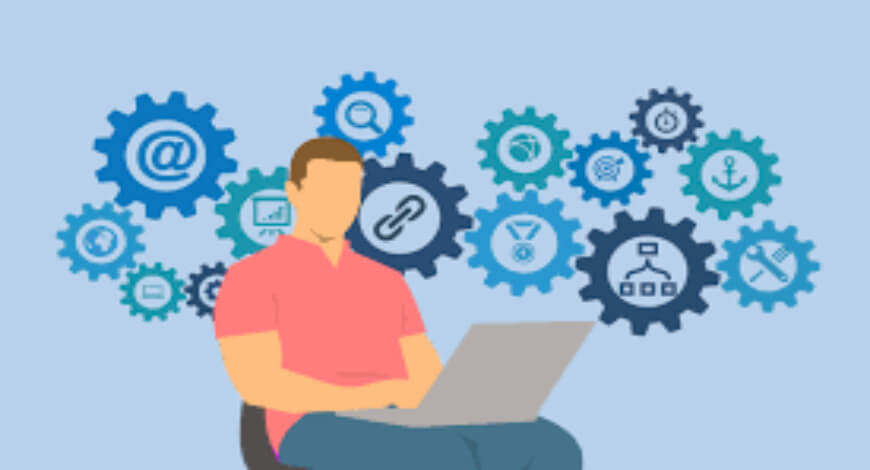In order to make education more accessible to people living in rural areas, the Internet needs to become more affordable for schools and individuals. It also needs to be easier to access local content and help teachers and students develop digital literacy. The Internet Society, which works to improve access to the Internet, is currently implementing a pilot project in a rural village in Pakistan.
Online learning
The Internet is a great tool for education and learning. It allows students to find study material easily and saves precious time for them. In the past, students had to spend a lot of time reading various kinds of books. In addition, students had to go to libraries and ask teachers for help. However, the Internet has changed all this.
The Internet has made education more accessible and affordable for people of different backgrounds. It also enables students to stay in touch with teachers and classmates. Parents and teachers can also interact with students on the internet. The students can also participate in online discussions and join forums to enrich their knowledge. So, the Internet can help students learn anything they need.
While the Internet has created many opportunities for education, it also creates some problems. It encourages students to be self-responsible, which is not feasible for everyone. Moreover, the Internet can also have unintended consequences and second-order effects. It is important to recognize the potential benefits of using the Internet for education.
One of the most important benefits of using the Internet for education is its access to knowledge. Many sites offer study materials and free online courses. Some universities also have video sessions and lectures that students can watch. These video sessions help students reinforce what they’ve learnt in class. Furthermore, the Internet provides students with access to thousands of books and research papers.
The Internet also provides opportunities for socialization. It is not only a means of communication and social interaction, but it can also be used for hanging out with friends and strangers. It can also lead to a lot of messing around, which involves fortuitous searching and experimentation. Sometimes, this leads to geeking out – intense participation in a community defined by common interests.
Research
The recent rise of MOOCs in the U.S. has highlighted the growing role of the Internet in education. This means that children can access educational content and activities at any time and from anywhere. This type of learning allows children to engage in activities independently and with minimal involvement from school staff. The Internet is a fantastic tool to explore and experiment with the many possibilities of learning and research.
The study also examined the use of the Internet by students and teachers in elementary and secondary schools. The study included focus groups that included 136 students from 36 schools. In addition, nearly 200 students voluntarily submitted essays on the use of the Internet for education. While one-time grants are readily available for the purchase of computers and servers, schools often lack the budget for annual maintenance, software upgrades, and expert knowledge. Furthermore, many schools still prefer to lock down their computers in order to avoid disruption.
Internet access is an essential component of an educational system. It allows for more effective teaching and learning methods. This can improve education and reduce inequalities. But many countries still lack access to high-speed broadband. Broadband connectivity is necessary to take full advantage of the Internet for education. It is also important to update policies to ensure that educators are equipped with the skills to use the Internet effectively. This way, we can unleash the full potential of the Internet for education and achieve the Sustainable Development Goals.
In addition to helping students, the Internet has changed the way we do research. Today, more data about individuals is available on the Internet than ever before. This means that computerized systems are increasingly able to gather and analyze massive amounts of data. This allows organizations to track people and predict behavior and outcomes.
Free courses
The Internet has become an invaluable tool for students to learn and to interact with other people. It has helped students prepare assignments and presentations and has saved students time and money. Students can also join social media groups and engage in online discussions. In addition, the Internet allows them to connect with experts in the field and broaden their learning.
The Internet has provided a huge boost to the education industry. It has improved the quality of educational resources, improved interactivity, and increased the quantity and variety of relevant data. And as more people gain access to the Internet, the momentum will continue to grow. With the development of ACT Fibernet and other high-speed connections, more students and teachers will have access to a world of resources.
The Internet is not perfect. For example, students accessing learning material on their mobile devices may get distracted by social media, and excessive usage may cause students to lose concentration. However, its benefits far outweigh its disadvantages. Open Educational Resources, or OER, are a great way to use the Internet to help educate more people. There are tools that make it easy for publishers to incorporate OER into their curriculum.
Having access to the Internet has enormous potential to improve education, and it is one of the pillars of sustainable development. As such, it is essential to unlock the full potential of the Internet and enable access to it. In order to achieve this, policymakers need to develop policies that will enable the use of the Internet. The Internet Society’s Enabling Environment Framework identifies the key factors that must be taken into consideration.
Collaboration with teachers
Collaboration between teachers has become an increasingly important tool for school improvement. In real-time, this approach has made it possible for teachers to share resources and discuss best practices with other educators. Collaboration takes different forms depending on the context. Some forms of collaboration involve exchanging classroom materials, while others involve co-construction and project planning.
One of the best benefits of collaboration between educators is the diversity of perspectives they bring. This collective expertise helps teachers better understand student needs and wants and can help plan instruction and services. Teachers should also use respectful communication skills when collaborating, taking into account cultural differences and socioeconomic status. It is important to coordinate expectations and ensure everyone has a fair share of the responsibility.
Digital collaboration between educators may also help co-teachers develop a unified teaching style. In “Collaborative Teaming,” Margaret King-Sears and colleagues describe how online communication can help co-teachers stay in touch and bounce ideas off of each other. This allows for a continued flow of ideas and conversation even after teachers leave the classroom.
Research shows that collaboration between teachers can help improve their job satisfaction and well-being. A Connecticut school district, for example, improved its results when the superintendent set aside time for teacher collaboration, a process that ignited change in the entire school district. Teachers began to share and discuss their best classroom innovations, and a culture of collaboration and support was born. The school district went on to reduce the number of expulsions and suspensions and reported a more positive work environment. It also won multiple awards for its efforts.
Collaboration between teachers is a highly valued educational practice, yet it is not always feasible for schools. In fact, it is sometimes too costly to use this method. In this case, a less expensive approach may be better suited for the school. One way is to use the ‘one-teacher-one-assistant‘ method, where one teacher instructs and the other assists.
Fundraising events to increase internet access
Increasing internet access in education is a top priority for many educational leaders. While it is difficult to provide high-speed internet for every student, some school districts are bridging the digital divide by holding fundraising events. By hosting these events, schools can purchase laptops and internet for students in need. Fundraisers can also increase equity among school districts and provide resources to teachers.

